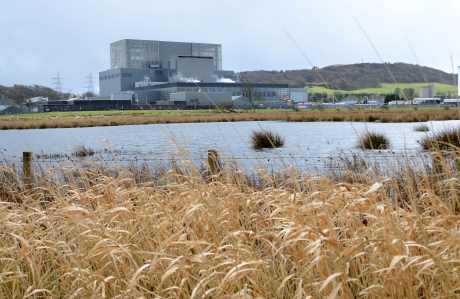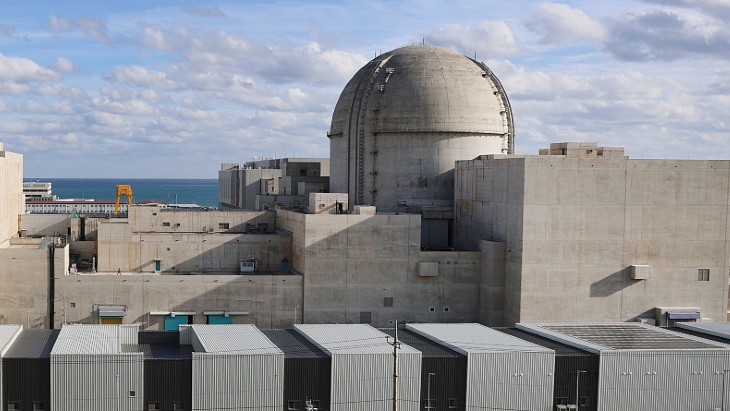EDF Energy has announced that Reactor 3 of its Hunterston B nuclear power plant in Scotland, UK, will remain offline while new cracks are investigated in the unit's graphite core. Whilst these cracks are expected as part of the ageing process of the graphite bricks, the latest cracks have appeared quicker than anticipated.
 |
| Hunterston B (Image: EDF Energy) |
Hunterston B power plant is a nuclear licensed site operating two Advanced Gas-cooled Reactors (AGRs) - units 3 and 4. The graphite core of each of the reactors is made up of around 6000 graphite bricks - 3000 of these are the graphite bricks containing fuel channels - which are all connected together. The plant began operating in 1976. Cracks have been found in some of the graphite bricks in both reactors 3 and 4 at Hunterston B during the past few years.
The Office for Nuclear Regulation (ONR) said it was informed in March that additional cracks had been found during planned inspections of the graphite bricks that make up the core of unit 3 of Hunterston B.
EDF Energy said the inspections "confirmed the expected presence of new keyway root cracks in the reactor core and also identified these happening at a slightly higher rate than modelled".
EDF Energy said yesterday, "While Hunterston B Reactor 3 could return to operation from the current outage, it will remain offline while the company works with the regulator to ensure that the longer term safety case reflects the findings of the recent inspections and includes the results obtained from other analysis and modelling." It added, "The operation of other reactors is not affected."
"We welcome the decision by EDF to delay the return to service of Reactor 3 at Hunterston B pending further assessment of the significance of the most recently identified keyway root cracks," said Donald Urquhart, Deputy Chief Nuclear Inspector and Director of ONR's Operating Facilities Division. "I view EDF's decision as responsible, conservative, and made in the best interest of public safety."
EDF Energy said it expects the reactor to be restarted before the end of this year. "This will result in a reduction in 2018 nuclear output forecast of up to 3 TWh," the company noted.
AGR reactors feature a graphite moderator and are cooled using carbon dioxide. The graphite bricks cannot be replaced or repaired during the operating life of the reactors. However, radiation damage changes the shape and size of the crystallites that comprise graphite, a process known as dimensional change, which in turn degrades the mechanical properties of the graphite. For continued operation, it is therefore necessary to demonstrate that the graphite can still perform its intended role irrespective of the degradation.
EDF Energy said, "We have been working over many years to fully understand and prepare for these late life changes to the reactor core and regular inspections at all our plants have provided a clear understanding of how the reactor cores age. The longer term safety case will build on work already completed and EDF Energy expects that this will demonstrate that there are large safety margins both now and for the projected reactor lifetime."
Researched and written
by World Nuclear News




_72306.jpg)


_49562.jpg)





